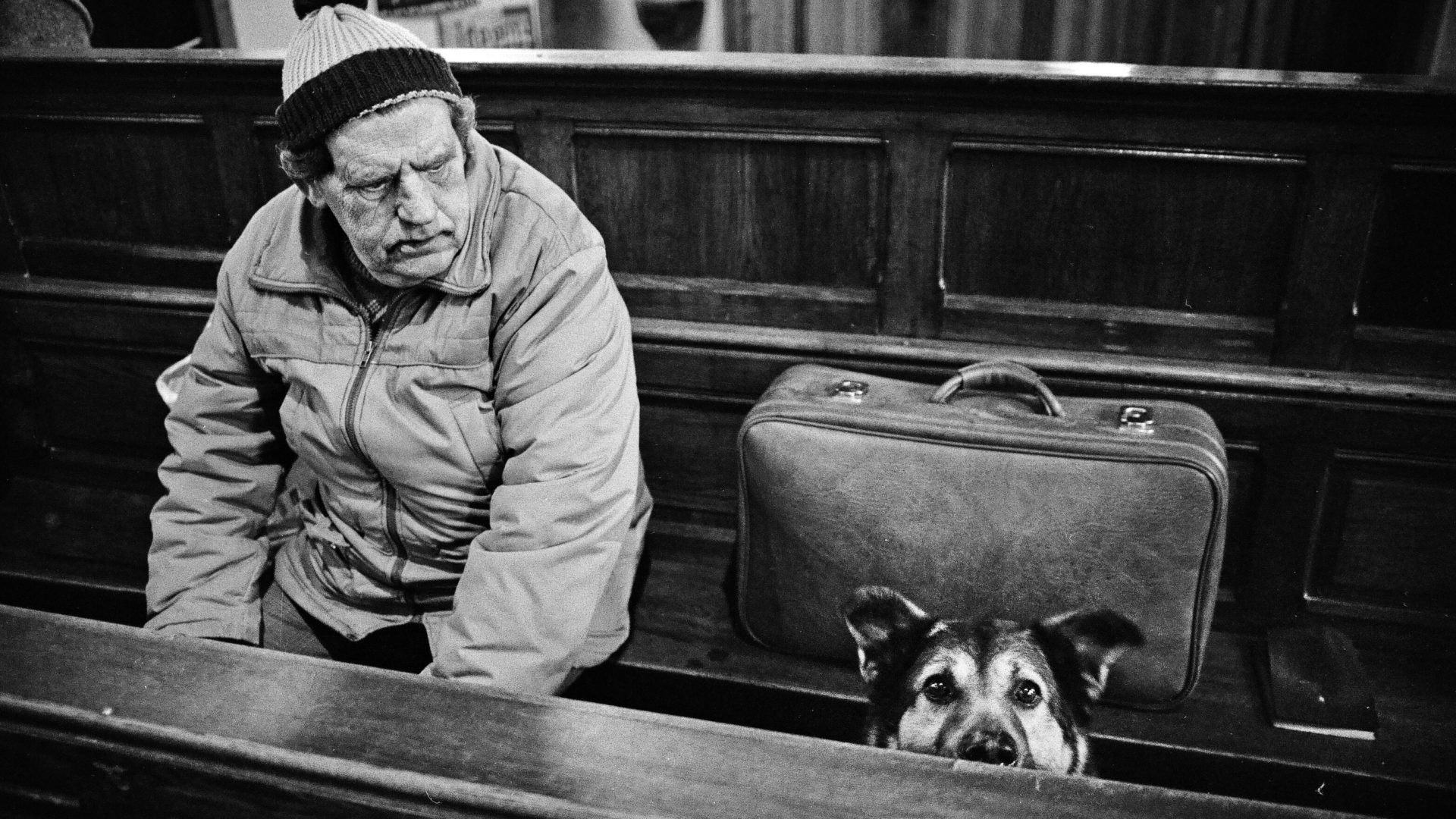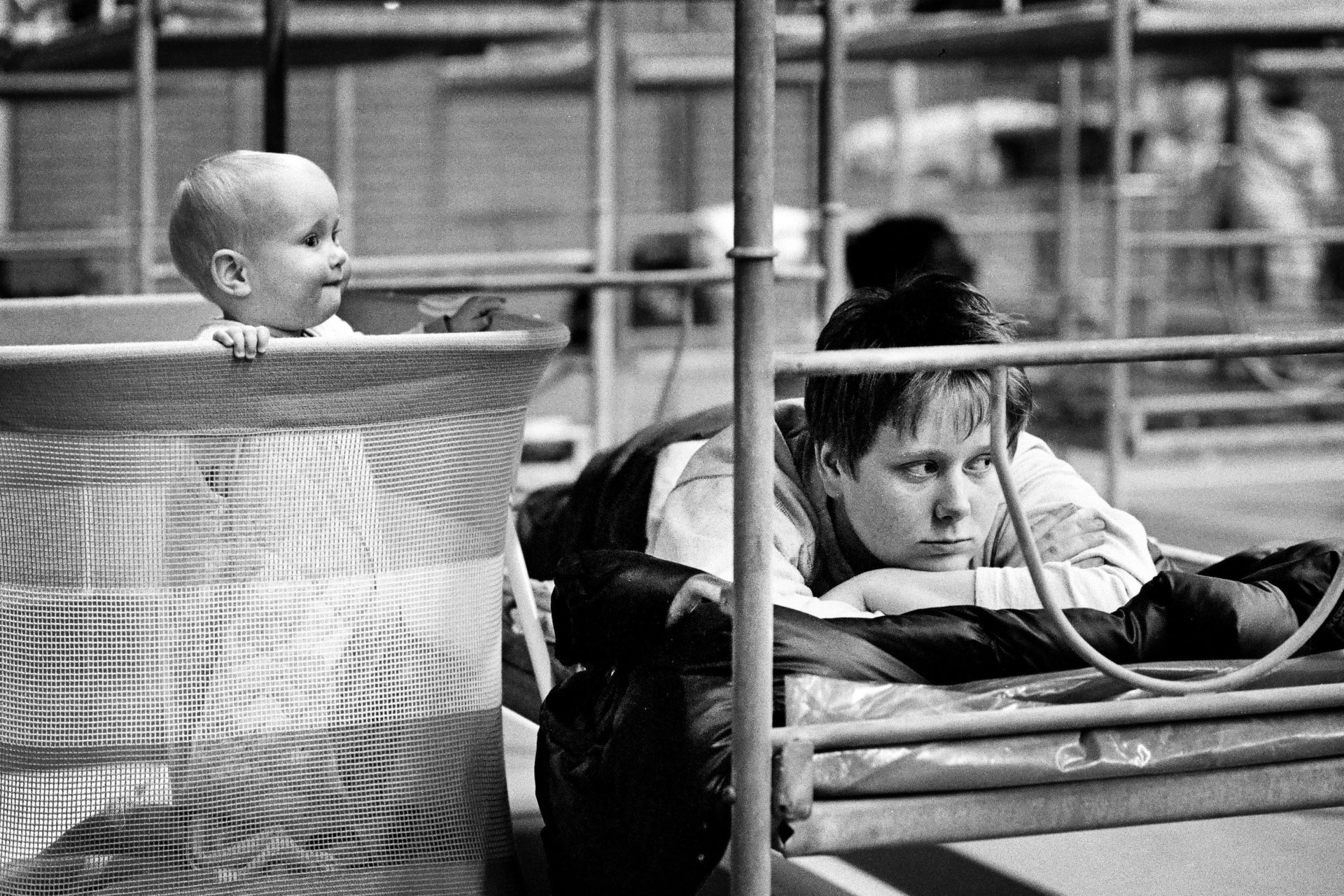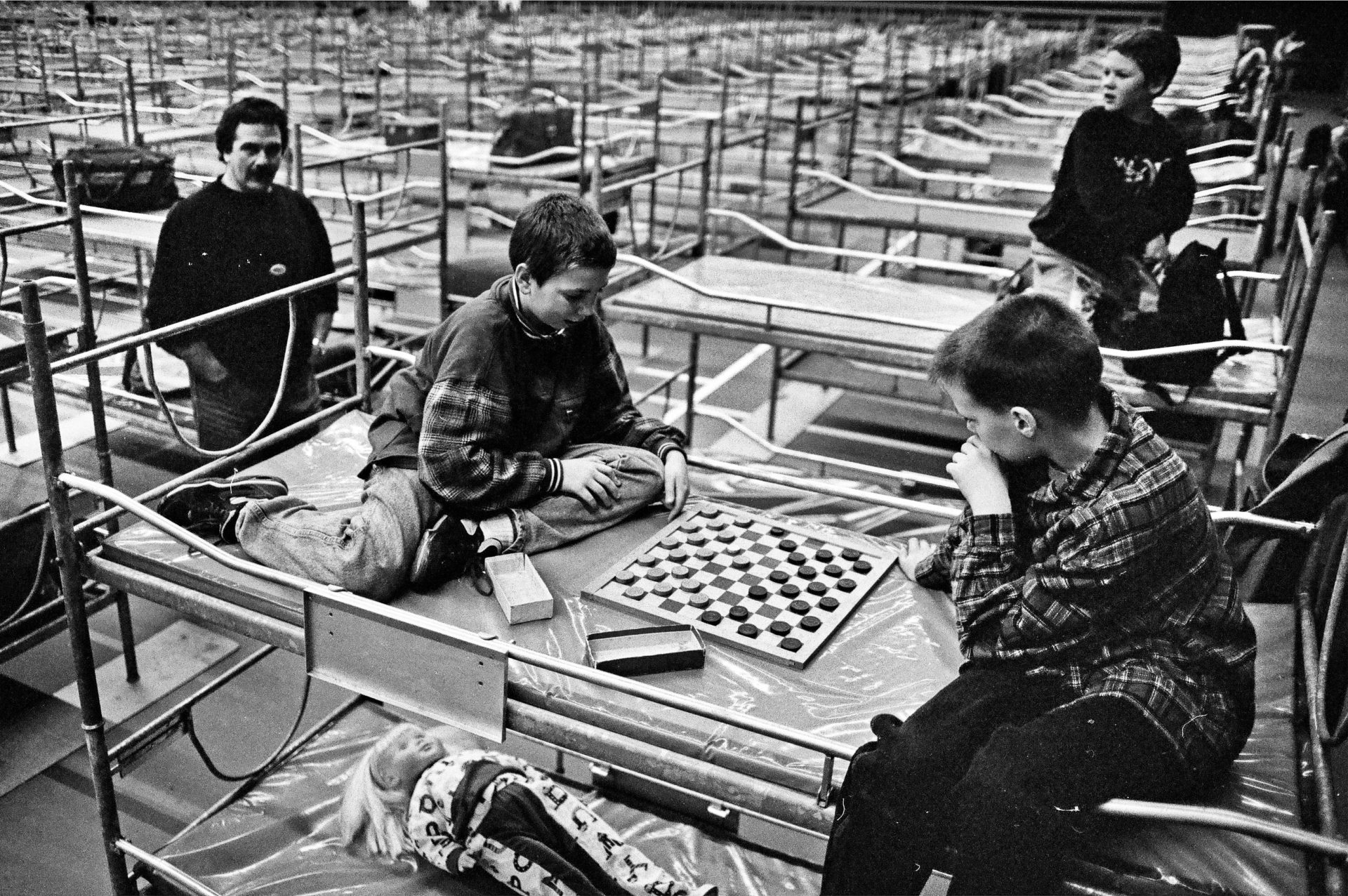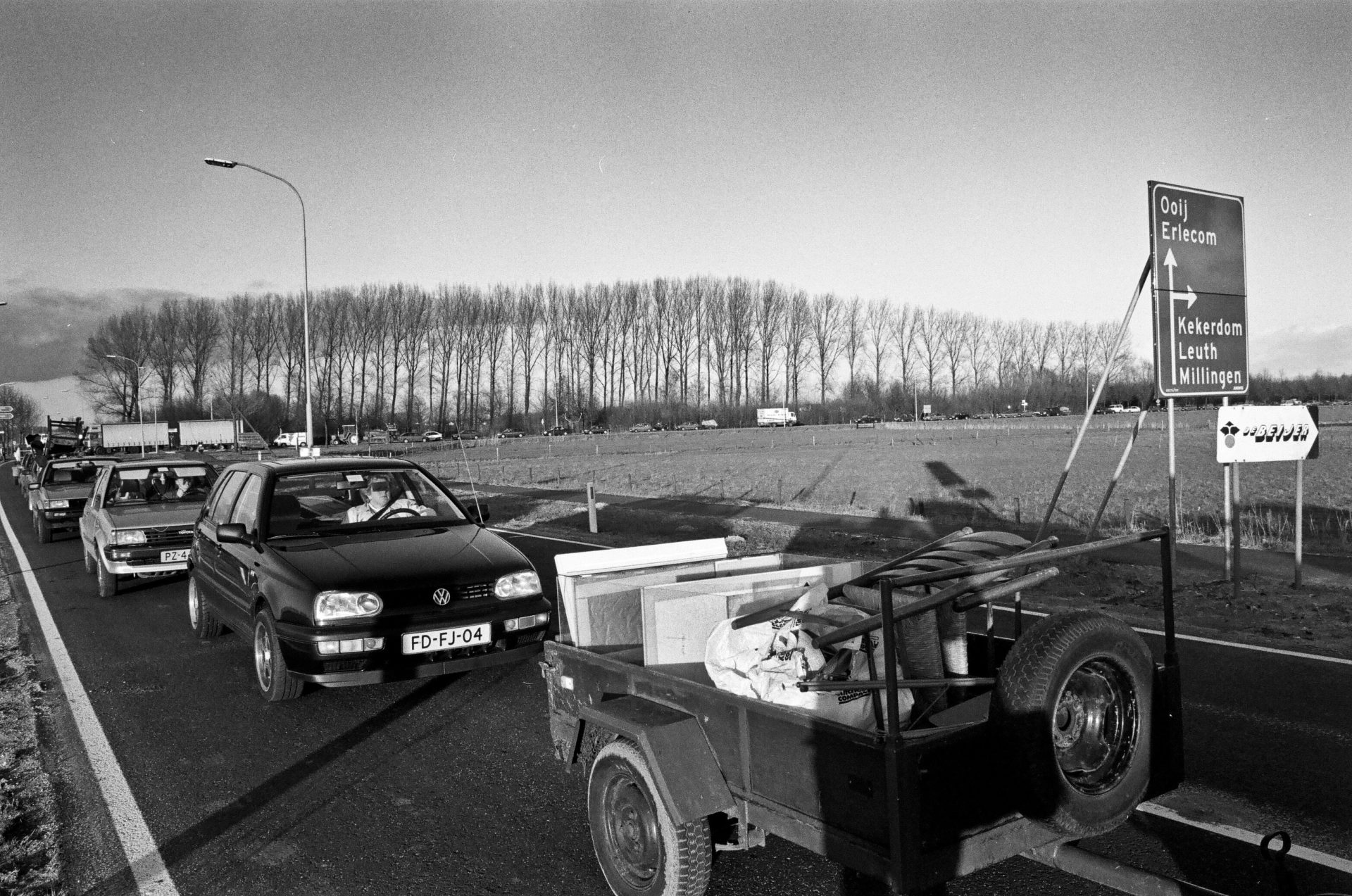‘1995’: the near-flood that united the Netherlands
-
 Gathering in the church before the evacuation. Photo: Bert Beelen
Gathering in the church before the evacuation. Photo: Bert Beelen
The flooding of the Waal, Maas and Rhine in 1995 led to the largest evacuation since World War II. After weeks of danger and uncertainty, 250,000 people were swiftly evacuated. Disaster didn’t strike, but the Netherlands embraced the flood like an old friend.
On 31 January 1995, following a great deal of hesitation and consultation between city mayors, dike wardens and the Queen’s Commissioner at the time, Jan Terlouw, the latter decided to initiate the evacuation of a large portion of the Rivierenland. The water at Lobith had reached a record height of 16.63 metres above NAP and it was concluded that the safety of the inhabitants could no longer be guaranteed. On the Waal near Nijmegen, 150,000 inhabitants were suddenly evacuated from the Ooijpolder.
It was a spectacular sight, a huge exodus of people, recalls Thed Maas, journalist at de Gelderlander. At the time he was living in Beek, on the edge of the area that had to be evacuated. ‘I was working for the newspaper and on my way home I saw a long line of people on the road. I didn’t yet know my own street was also being evacuated. When I got home, my wife told me we had to leave.’
Solidarity
The evacuation instantaneously evoked a feeling of solidarity. Neighbours helped each other take things up to the attic and move furniture. The hectic events also appeared on TV: there were special news flashes, and images of frightened farmers were broadcast across the globe. Maas: ‘The media went totally mad. To people from the Western Netherlands and abroad, things looked really bad.’

But were the people in the village of Beek frightened when they heard they had to leave their homes? Maas: ‘Not at all. People had been living in the area for years, in some cases for generations. And we knew it would take the water at least two days to reach our homes, if it did at all.’ There was even a kind of holiday spirit among some of the inhabitants. Many people ended up staying in neighbouring hotels, and they would get together in the pubs for a drink or two.
The polder inhabitants had often seen the river level reach impressive heights, and they weren’t that impressed by the rising water. This became even more apparent when Maas and his colleague walked into a pub in a small village across the German border. ‘The water was just as high there, it was the same area. But they didn’t have to leave. They were all sitting around making fun of those crazy Dutchmen.’
Exceptional
Lotte Jensen, Professor of Dutch Literary and Cultural History at Radboud University, was a student in Utrecht at the time of the flood. ‘I remember a lot of people came to the Jaarbeurs Exhibition Centre, which had been turned into a temporary shelter. And there were lots of people on the trains and at the Central Station.’ Jensen is currently working on a largescale study of disasters and Dutch identity formation from the sixteenth to the nineteenth century.
Even though she didn’t personally experience the 1995 flood, looking back she refers to it as an ‘exceptional case’. ‘Of course there was some damage, streets were flooded. But the dikes didn’t actually collapse.’

This didn’t stop the Dutch from responding as they have always done when there is a disaster. ‘This is really very interesting. Lots of elements you would normally see in a real flood disaster also made their appearance at the time. For example, there was a big fund-raising campaign to help the victims.’ Just as in 1855 and 1861 when the Betuwe was flooded, says Jensen. ‘All over the country people collected money for the victims in the Rivierengebied. Huge sums were raised – we’re talking millions of guilders.’
Another Dutch tradition also made its appearance again: singing songs about floods. In 1995, Marco Borsato performed during the fund-raising campaign on TV, but for centuries, songs had been used to spread the news, raise funds, and help people process the disaster. For example, after the storm tide of 1825, which claimed 379 lives in the Netherlands, a song was written ‘to a sad tune’ that extensively explored the facts and emotions surrounding the disaster.
Wonder
The centuries-long struggle against water is so deeply embedded in our system that even after an evacuation without a single victim we fall back on our traditions. Does fear of the water play a big role in this? Jensen: ‘I think we like to think we’re very safe, precisely because we have so much experience and expertise.’

Disasters do often lead to improving dikes or strengthening the infrastructure that protects us against the water. After the Zuiderzee flood of 1916, we built the Afsluitdijk, after the disaster of 1953, the Delta Works. The flood of 1995 represented another important turning point. It led to the ‘Ruimte voor de Rivier’ (Room for the River) project which included, among other things, the creation of a side channel in the Waal.
Ultimately, the Dutch have a paradoxical relationship with water, says Jensen. ‘In 2018, the level of the Waal was once again incredibly high. A few more centimetres, and the land would have been flooded. I went to take a look at it, and somehow it was still difficult to imagine the impact this would have. You look at the danger with a kind of wonder and assume that everything will be all right. Some people say we need these kinds of disasters to realise how vulnerable we are.’



